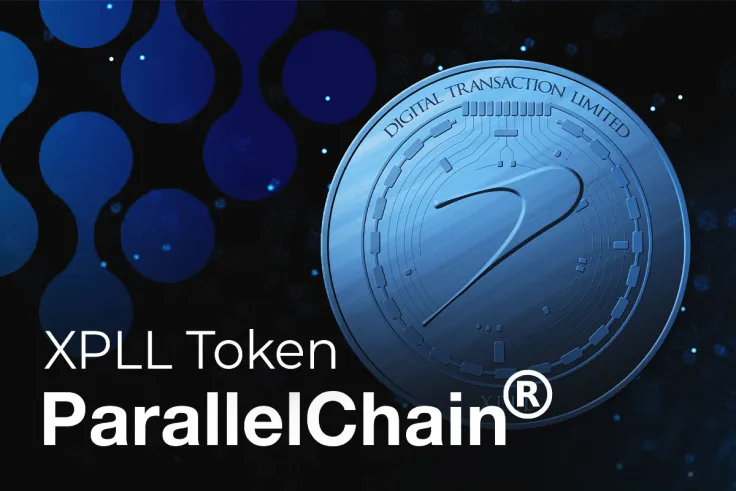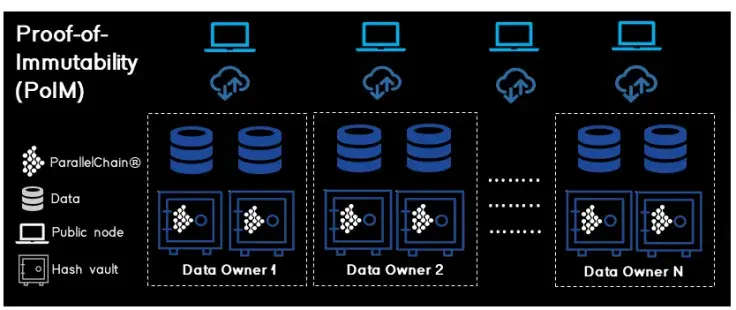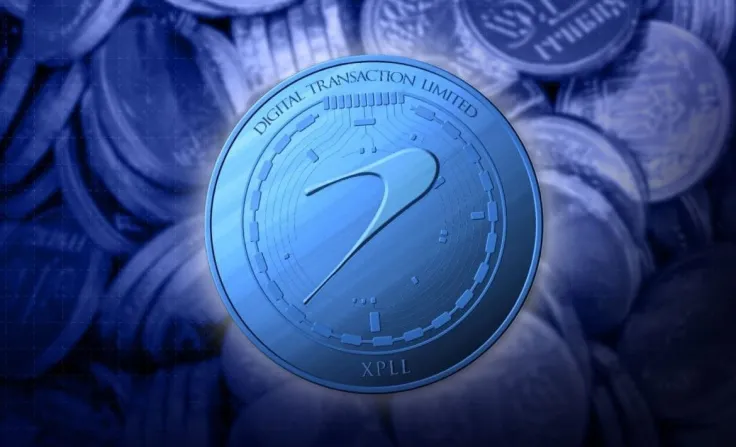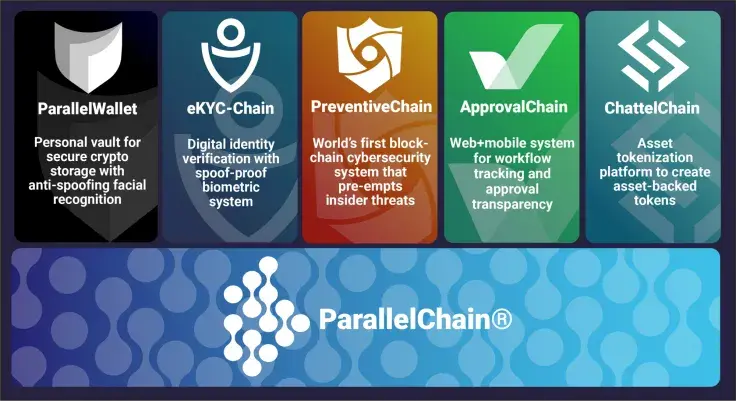
Disclaimer: The opinions expressed by our writers are their own and do not represent the views of U.Today. The financial and market information provided on U.Today is intended for informational purposes only. U.Today is not liable for any financial losses incurred while trading cryptocurrencies. Conduct your own research by contacting financial experts before making any investment decisions. We believe that all content is accurate as of the date of publication, but certain offers mentioned may no longer be available.
ParallelChain® is an all-in-one decentralized blockchain ecosystem for retail and enterprise-grade use cases. Why is it superior to existing solutions? And which "market pains" can it cure in numerous segments of real-world businesses?
ParallelChain® by Digital Transaction
About three years ago, at the peak of the blockchain hype, many projects and businesses were lured by its promise to solve many problems. These blockchains were conceptualized for Bitcoin and were never suited to widespread enterprise adoption. Low bandwidth, mediocre scalability, limited transaction speed and inadequate operational costs: these are just a few of the fundamental issues that led many businesses not to move beyond a proof of concept (PoC) blockchain.
That is where ParallelChain® comes in. ParallelChain® was developed in 2018 to address all the limitations of first-generation blockchains in their attempt to reconsider technical frameworks for extensive adoption.
The team behind ParallelChain® is Digital Transaction, a blockchain technology startup headquartered in the burgeoning blockchain hub of Hong Kong.
The highest performant blockchain in the world
ParallelChain® is designed to merge all of the existing benefits of blockchains into one; these include decentralization, immutability and attack resistance.
The performance capability of ParallelChain® is what sets it apart from the rest. It can process more than 100,000 transactions per second (TPS), which dwarfs other blockchains like Polkadot, R3 Corda and Ethereum 2.0. And by combining chains, it can today reach 200,000; 300,000 and 400,000 TPS in a seamless configuration with unlimited scalability.
ParallelChain®'s latency is also by far the fastest in the market at 0.003 seconds, making it the only blockchain platform with speeds and bandwidths fast enough to handle large-scale high-frequency transactions and to support any native internet applications.
Applications on Ethereum and Hyperledger Fabric can be seamlessly migrated onto ParallelChain®, providing plenty of opportunities for dApps and DeFi migration, which enables companies to future-proof their existing blockchain investments.
An additional benefit is ParallelChain®'s built-in privacy compliance. It is one of the few blockchains that is compliant with local data privacy regulations such as the EU's GDPR: a basic expectation that businesses and governments have for any underlying technology supporting their operations.
Proof of immutability
Unlike most existing blockchains, ParallelChain® utilizes a non-consensus-based mechanism called proof of immutability (PoIM), which is more efficient than both proof of work (PoW; Bitcoin, Monero, Ethereum 1.0) and proof of stake (PoS; Ethereum 2.0, Cardano, EOS, Polkadot) solutions.
Proof of immutability (PoIM) involves two types of actors: record creators and selective nodes. Record creators (or public nodes) can write their own hash-encrypted records. Selective nodes compare with one another's hashes stored in their own vault, as well as with the creator's, and their operators are rewarded with XPLL tokens for doing their work.

Due to its patented "parallel" design, data in ParallelChain® is protected by unhackable private inter-chain communication tools. Provable immutability is one of the key concepts that backs ParellelChain®'s technical design.
Team
ParallelChain® is developed and curated by a passionate team of top-notch innovators and scientists, who cumulatively have more than 270 U.S. patents under their belts. The architect of the project is CEO Ian Huang (picture below), who has an impressive career track in CPU and operating system designs, data networking and IT in Silicon Valley and Boston's Route 128/495 region before founding Digital Transaction in 2018.

During his decades of engineering work in the U.S., Mr. Huang held the role of Vice President of Engineering at Hughes Network Systems, leading its worldwide product strategy and development. He ventured into entrepreneurship in 1992 by establishing network company XNET, which he took public on the NASDAQ four years later. Mr. Huang is also the inventor/co-inventor of 10 pending blockchain-focused patents in the U.S., Europe and China.
Dr. Radia Perlman and Charlie Kaufman are the company's very first private investors. Dr. Perlman, often referred to as the "Mother of the Internet," invented the network protocol that defined the structure of the internet and is the recipient of over 130 U.S. patents. She was inducted into the U.S. National Inventor Hall of Fame in 2016, the U.S. Academy of Engineering in 2015 and the U.S. Internet Hall of Fame in 2014.
Mr. Kaufman, the recipient of over 70 U.S. patents, is a world-class cybersecurity expert. He was the Chief Network Security Architect at Microsoft Azure and IBM. He also currently sits on the U.S. Academy of Sciences' Cyberspace Security Panel as an expert member.
Dr. Geoffrey Yuen, with 10 years of experience in AI, big data and blockchain, is the project's Chief Scientist; and marketing industry veteran Noëlle Gahan, former tech practice leader of PR powerhouses BCW and FleishmanHillard and Cisco, curates the marketing strategy for Digital Transaction.
The project is also backed by a solid technology strategy task force group with hundreds of years of Silicon Valley experience combined, including Qualcomm's former Vice President of Technology, Dr. Dileep Bhandarkar, Synaptics' former Chief Technology Officer, Dr. Shawn Day, and Dr. Raj Jain and Dr. Nii Quaynor.
XPLL: ParallelChain® Token
The XPLL token is the core native utility asset of the ParallelChain® protocol. Recently launched as an ERC-20 (Ethereum-based) token, it is a great way for participants to get involved in this highly promising project. Currently, XPLLs can be purchased through a SAFT agreement during its current private sales stage until the end of May. After that, it is scheduled to launch on crypto exchanges. XPLL holders also have the option to redeem their tokens for software licenses for any ParallelChain®-based products.

Token Specification
Token Name: ParallelChain Token (XPLL)
Trade Currency: Euro, USD (fiat); BTC, ETH, USDT and USDC (cryptocurrency)
Total Supply: Capped at 1,000,000,000 for the first three years following completion of the private sale
Token in Circulation: 400,000,000
Current Issued Price (Private Sale): €0.50 or U.S. $0.60 per token
This Medium article offers a detailed breakdown of the token sale schedule and tokenomics. More information is also available in the whitepaper.
ParallelWallet
XPLL holders can keep their XPLLs safely in the ParallelWallet, a digital wallet developed by Digital Transaction, which can also store other ERC-20 tokens. In contrast with your typical crypto wallets, the ParallelWallet is actually built on a blockchain, i.e., ParallelChain®, rendering the possibility of malicious hacks impossible. All transaction records as well as account activities are stored and backed up on the ParallelChain® blockchain in real time.
ParallelChain® in banking and fintech
Besides direct peer-to-peer transactions on the blockchain, ParallelChain® can provide the technical framework for more sophisticated business solutions, particularly in the banking and FinTech sectors.
Banking, reconsidered
ParallelChain® is the fastest blockchain in the world. With its industry-leading throughput (100,000 TPS) and transaction finality (0.003 seconds), ParallelChain® can provide banks with near-instant payment channels to improve their revenue opportunities as well as elevate end users' experiences. ParallelChain® will enable banks to compete with FinTech start-ups in speed and convenience.
Also, ParallelChain® can facilitate banking settlement and clearance systems. Being fully GDPR-compatible, the only blockchain known to date with such an offering, ParallelChain® can replace cumbersome and bulky old-fashioned protocols like SWIFT and SEPA.
ParallelChain® can be used for building lending/borrowing ecosystems including peer-to-peer ones. As its logic allows for the removal of all intermediaries and third-party actors, lending becomes available with low rates and high-speed loan decisions. Also, its well-designed architecture removes the possibility of "duplicate entries" while guaranteeing zero data leaks.
Finally, switching to ParallelChain® significantly eases the processes of accounting and auditing. Moving recordkeeping to blockchain leaves no chance for data tampering and losses, and smart contract applications can be deployed to issue bills, certificates, transaction receipts and more.
ParallelChain® ecosystem: A one-stop shop for BaaS service
Outside of the banking and fintech segment, Digital Transaction created a number of "chains"—purpose-made applications that harness the power of ParallelChain® to solve real-world problems. Each of them can be easily integrated into the existing business mechanisms of companies to accelerate their digital growth.

eKYC-chain is a biometric system used to streamline identity verification and authentication procedures, which are normally required for financial institutions' customary Know Your Customer (KYC) and anti-money laundering (AML) policies.
Through anti-spoofing facial recognition and real-time activity tracking, PreventiveChain is used to preempt "insider threats," which have become more common than external cyber attacks since the drastic increase of remote working due to the pandemic.
ChattelChain is a platform that offers instantaneous cryptocurrency trading and the tokenization of assets such as real estate, green bonds and art pieces, while ApprovalChain merges the benefits of workflow and provenance tracking as well as document approval tools on the blockchain. All control instruments become more transparent and accessible once moved from centralized trackers (Trello, Asana, etc.) to blockchain-based environments.
Bottom line
Developed and curated by a strong and insightful Digital Transaction team, the ParallelChain® blockchain provides a secure and high-performance technological framework for solutions including but not limited to data storage, identity management, workflow tracking and advanced security tools, making it the optimal decentralized system for enabling B2B and B2C fintech and banking use cases.
Due to its unique proof of immutability (PoIM) consensus, ParallelChain® leaves in the dust mainstream smart contract platforms such as Ethereum and Cardano in terms of latency and aggregated bandwidth.
The XPLL token is the backbone of the ParallelChain® ecosystem. Besides being the perfect instrument for daily transactions on the ParallelChain® blockchain, this utility token allows participants to take part in blockchain referendums and redeem for ParallelChain® solutions.
 Dan Burgin
Dan Burgin Vladislav Sopov
Vladislav Sopov U.Today Editorial Team
U.Today Editorial Team